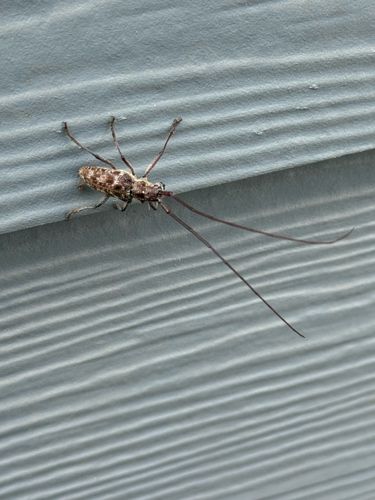Longhorn Beetle or Sawyer Beetle
Scientific Name: Cerambycidae (family)
Order & Family: Order: Coleoptera, Family: Cerambycidae
Size: Highly variable depending on the species, generally ranging from 10 mm to over 60 mm (0.4 to 2.4 inches) in body length, not including the antennae which can be much longer than the body.

Natural Habitat
Found in forested areas, woodlands, and urban environments where host trees are present. They are often associated with coniferous and deciduous trees, stumps, and fallen logs.
Diet & Feeding
Adults often feed on pollen, nectar, leaves, or bark, but some species do not feed as adults. Larvae (grubs) are xylophagous, meaning they bore into and feed on wood, typically from dead, dying, or stressed trees, but some species attack healthy trees.
Behavior Patterns
Adults are typically crepuscular or nocturnal, attracted to lights. Larvae burrow into wood, feeding on the inner bark and sapwood, creating tunnels (galleries) that can weaken the host tree. The life cycle can take one to several years depending on the species and environmental conditions.
Risks & Benefits
Risks: Some species are significant pests of forestry and agriculture, causing damage to trees by larval tunneling, which can girdle young trees, weaken older trees making them susceptible to wind damage, or degrade timber quality. Introduction of invasive species like the Asian Longhorned Beetle can cause widespread devastation to native tree populations. Benefits: As decomposers, their larvae help break down dead wood, contributing to nutrient cycling in forest ecosystems. They also serve as a food source for other animals.
Identified on: 9/3/2025